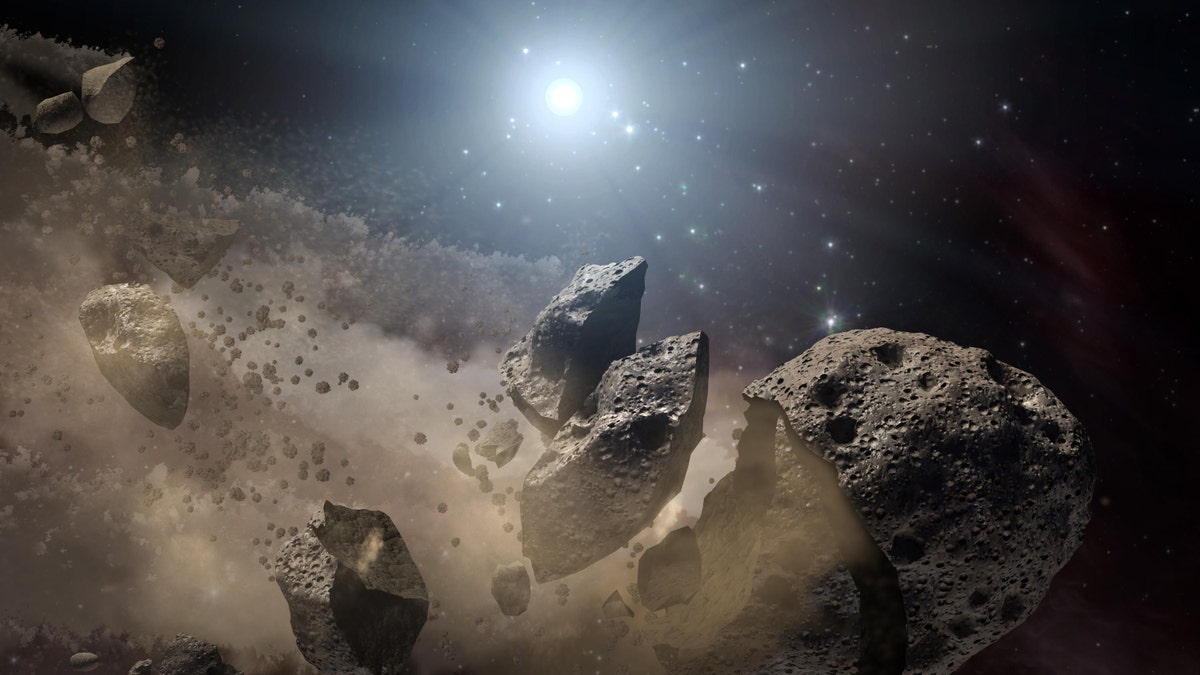
Image courtesy of NASA shows an artist's concept of a broken-up asteroid. (REUTERS/NASA/JPL-Caltech/Handout)
An astrophysicist has warned that Earth could be hit with a surprise asteroid strike, according to news reports.
Professor Alan Fitzsimmons, an astronomer at the Queen’s University Belfast Astrophysics Research Centre highlighted the threat ahead of Asteroid Day on June 30, according to Phys.org.
Fitzsimmons reportedly warned that it is a case of when, rather than if, an asteroid collision will happen.
June 30 marks the 109th anniversary of the “Tunguska event” in Siberia – the largest-ever recorded explosion of a space object plunging to Earth. The blast, which was later attributed to a comet or asteroid fragment, is generally estimated to have been about 10 megatons. No injuries were reported, but some 80 million trees over 830 square miles were leveled.
NASA WILL TACKLE ASTEROIDS WITH NEW PLANETARY DEFENSE OFFICE
"Astronomers find Near-Earth Asteroids every day and most are harmless,” said Fitzsimmons, according to Phys.org. “But it is still possible the next Tunguska would take us by surprise, and although we are much better at finding larger asteroids, that does us no good if we are not prepared to do something about them."
The astrophysicist warns that a similar strike could destroy a major city, Phys.org reports, and a large asteroid could prove even more dangerous.
However, Tunguska acknowledged the advances that have been made in locating asteroids. "It is important to know that scientists and engineers have made great strides in detecting Near-Earth Asteroids and understanding the threat posed by them,” he said. “Over 1,800 potentially hazardous objects have been discovered so far, but there are many more waiting to be found.”
PLANET 10? ANOTHER EARTH-SIZE WORLD MAY LURK IN THE OUTER SOLAR SYSTEM
Last year NASA opened a new office to track asteroids and comets that come too close to Earth. The Planetary Defense Coordination Office (PDCO) formalizes the agency’s existing program for detecting and tracking near-Earth Objects, known as NEOs. The office is located within NASA’s Planetary Science Division, which is in the agency's Science Mission Directorate in Washington, and works with the Federal Emergency Management Agency (FEMA) and other federal agencies and departments.
NASA has been working on planetary defense for some time – its Near-Earth Object Observations Program already works with astronomers and scientists around the world to look for asteroids that could harm Earth.
An asteroid named (441987) 2010 NY65 will fly past Earth at a safe distance on Saturday. The skyscraper-sized rock is classified as a “potentially hazardous asteroid” by NASA but poses no immediate danger. The asteroid will approach within just over 8 lunar distances, or 8 times the distance between the center of the Earth and the center of the Moon, according to NASA.
The asteroid will continue making yearly “close” approaches to Earth through 2022, NASA says, with its closest flyby of 7.3 lunar distances occurring next year.
The Associated Press contributed to this article.




















